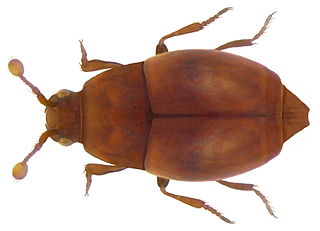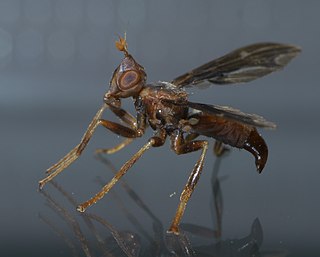
The bushwren, bush wren, or mātuhituhi in Māori, was a very small and almost flightless bird that was endemic to New Zealand. It had three subspecies on each of the major islands of New Zealand, the North Island, South Island, and Stewart Island and nearby smaller islands. The species disappeared gradually after the introduction of invasive mammalian predators, last being seen on the North Island in 1955 and the South Island in 1968. Attempts were made to save the remaining population on small islands off Stewart Island, but they ultimately failed with the death of the last remaining known birds in 1972.

The western black rhinoceros or West African black rhinoceros was a subspecies of the black rhinoceros, declared extinct by the IUCN in 2011. The western black rhinoceros was believed to have been genetically different from other rhino subspecies. It was once widespread in the savanna of sub-Saharan Africa, but its numbers declined due to poaching. The western black rhinoceros resided primarily in Cameroon, but surveys since 2006 have failed to locate any individuals.

Discoplax is a genus of terrestrial crabs. It is very closely related to the genus Cardisoma.

Long-footed potoroo – Potorous longipes – is a small marsupial found in southeastern Australia, restricted to an area around the coastal border between New South Wales and Victoria. It was discovered in 1967 when an adult male was caught in a dog trap in the forest southwest of Bonang, Victoria. It is classified as vulnerable.

The Savanna swamp shrew is a species of mammal in the family Soricidae. It is endemic to Nigeria. Its natural habitat is swamps. It is threatened by habitat loss.
Stenoscinis is a genus of frit flies in the family Chloropidae. There are at least 2 described species in Stenoscinis.

Hylodesmum is a genus of flowering plants in the family Fabaceae, sometimes called ticktrefoils or tick-trefoils. It is sometimes treated as part of Desmodium.

Panulirus longipes, the longlegged spiny lobster, is a species of spiny lobster that lives on shallow rocky and coral reefs in the tropical Indo-Pacific region. The International Union for Conservation of Nature has assessed its conservation status as being of "least concern".

Oscinellinae is a subfamily of frit flies in the family Chloropidae. There are at least 40 genera and 180 described species in Oscinellinae.
Trichobius is a genus of bat flies in the family Streblidae. There are more than 60 described species in Trichobius.
Chelonychus longipes is a species of true weevil in the beetle family Curculionidae. It is found in North America.

Aeletes is a genus of clown beetles in the family Histeridae. There are more than 80 described species in Aeletes.
Anabrus longipes, the long-legged anabrus, is a species of shield-backed katydid in the family Tettigoniidae. It is found in North America.
Micaria longipes is a species of ground spider in the family Gnaphosidae. It is found in North America.

Pyrgota is a genus of flies in the family Pyrgotidae. There are about 10 described species in Pyrgota.
Brachydeutera longipes is a species of shore flies in the family Ephydridae.

Scytodes longipes is a species of spitting spider in the family Scytodidae. It is found in Southern America, has been introduced into Pacific Islands, Guinea, Congo, Indonesia, and Australia (Queensland).
Allende is a genus of South American long-jawed orb-weavers that was first described by F. Álvarez-Padilla in 2007.
Hologymnosus longipes, the sidespot longface wrasse or the plain slender wrasse, is a species of marine ray-finned fish from the family Labridae, the wrasses. It occurs in the western Pacific Ocean.










